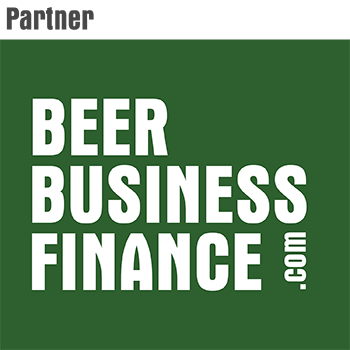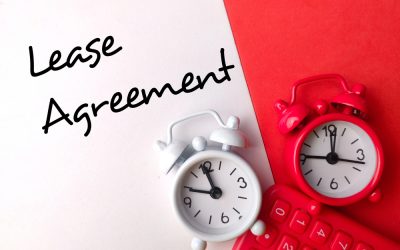Financing your brewery can get complicated fast.
In this post and podcast we’ll simplify the financing process so that you can get the best debt structure for your brewery.
Key Topics
- Loan terms and definitions
- Types of loans and how each works
- Example of a typical brewery financing arrangement (what it looks like)
- How interest rates work…
Resources
- Need an SBA loan for your startup brewery or expansion? Reach out to Scott Birkner at Dogwood State Bank, sbirkner@dsbnc.com
- Download a PDF of the podcast transcript, or scroll down to view.
Listen to the Brewery Financing Series: Loan Basics podcast…
P.S. Subscribe to the Craft Brewery Financial Training Membership and get the full course on brewery financing tips, tactics and strategies.
Podcast Transcript: Brewery Financing Basics
Speaker 1 (00:00):
Welcome to the craft brewery finance podcast, where we combine beer and numbers to provide you with tips, tactics, and strategies to improve financial results in your brewery. I’m your host, Kary Shumway, a CPA CFO for a brewery and a former CFO for a beer distributor. I’ve spent the last 20 years using finance to help improve financial results in our, your business. And now I’m helping other craft breweries do the same. Are you ready to take your brewery financial results to the next level let’s get started. Hello and welcome to the craft brewery finance podcast. In today’s episode, we’re going to talk about financing basics. So whether you’re looking to finance a startup brewery or expand your existing brewery, or just buy new equipment, I think this information will be useful for you as we talk about basically how to finance the purchases of each of those items.
Speaker 1 (00:55):
So we’re going to talk about basic loan terms, types of loan structures and giving example of a brewery expansion loan structure. So financing or borrowing money requires that you’re going to have to work with a lender. And for the purposes of today’s podcast, we’re going to talk about working with banks, commercial banks specifically. So when you’re working with banks, it requires a working knowledge of how loans work and really how your banker thinks what they’re going to need from you and ultimately how the bank, how the institution approves loans and what they’re, what they’re going to be looking for. So in this podcast, we want to look at basic loan terminology and again, different types of loan structures. So you can get the best loan arrangement possible for your brewery project. So if you want further details and resources on this topic, basically how to, how to borrow money for your brewery and how to, how to structure a loan, how to work with your banker, check out craft brewery, finance.com and the there’s lots of free resources there, premium resources as well.
Speaker 1 (02:06):
And if you haven’t done so already, you can sign up for the world, famous craft brewer, finance newsletter, just go to the website and click on, sign up and that’ll take you right there. So for starters, we’re going to talk about basic loan terms. So as the name implies, some of these terms that I’m going to cover are pretty basic, maybe common knowledge for you. Others may be a little bit more foreign others you may have heard of, and you’re not quite sure what they ever meant. So we’re going to run through each of these. I think it’s good to get a ground in what these terms are, cuz these are the language of your banker. So it helps to understand what they’re saying to you. And then obviously you, so you can understand how to, how to put together a good loan structure. So first this term of loan to value.
Speaker 1 (02:52):
So loan to value is basically the amount that bank is going to loan you relative to the value of the asset that they’re lending against. So for example, if you’re looking to purchase a $2 million building for your brewery, the bank, isn’t going to lend you the whole thing, but they’re going to keep the loan to value ratio somewhere in the 70 to 80%. So for example, they’ll lend you 70 to 80% of the value of that building for your brewery. So on a $2 million valued building, they’ll lend you somewhere in the neighborhood of 1.6 million. So the remainder is the amount that you’ve gotta come up with. That’s the equity that you’ll have to put into a deal like that. So again, loan to value basically represents much money. The bank is going to lend to you relative to the value of the asset that they’re landing against.
Speaker 1 (03:45):
The next is principle. So your loan principle always a tough one to spell principle is like your principal in elementary school with a pal at the end, the principal was always your pal. So the principle is basically the amount that’s borrowed on the loan and the amount that’s still outstanding. Next is one you’re all familiar with and that’s interest and interest expense. So if you want to make yourself sick, you can look at how much interest you’re going to pay over the course of your loan and interest is the amount that you pay for the privilege of borrowing money. And that interest is presented in terms of an interest rate, 5%, 6%. And that’s computed as a percentage of the amount of principle that’s outstanding.
Speaker 1 (04:37):
So there’s a variety of interest rate benchmark. They’re going to be used to establish what your rate will be. Sometimes it’s pegged off the prime rate or this concept called LIBO or the bank’s internal cost of funds. These rates may also be expressed, not as a percentage like 5%, that makes sense to everybody. But a lot of times bankers will use the term basis points. A basis point is basically 100th of a percent. So if you talk about 1%, that’s a hundred basis points. If you talk about 1.2, 5%, that’s 125 basis points. I don’t know why they do it this way, but they do so basis points is often used when talking about the interest. So your credit rating the collateral, a variety of other factors are going to influence what the rate is that you’re going to get. But ultimately the rate is usually pegged off of some sort of benchmark.
Speaker 1 (05:36):
So understand what that benchmark is and how it’s ultimately going to affect the cost of your loan. So taken together and interest makes up the amount of your monthly payment on the loan. So this is principle and interest also referred to as P and I, so just like you have a home mortgage, the monthly payment stays the same each month, but the amount of the principle and interest are going to fluctuate based on the amount of the remaining principle. So early in the loan, more of your payment is going to go to interest. And later in the loan, as the principal gets paid down, the principal’s lower more money is going to go to the principle.
Speaker 1 (06:17):
The term is the length of the time on the loan. So for example, if you buy a new truck for your brewery the bank is going to give you a, let’s say a five year term loan. So that’s the term is basically how long you have to, to pay the loan back. Amortization period is the time that you have to repay the loan. So it sounds like it’s the same thing as the loan term, but sometimes it’s different. So for example, if you borrow that $2 million for the warehouse, the bank is going to calculate your payments, let’s say based on a 20 year amortization schedule. So this spreads, the payments over a long, longer period of time makes ’em a little easier to handle. However, the bank isn’t going to fix the interest rate for 20 years, they’ll only fix it for say five years or seven years.
Speaker 1 (07:08):
And that’s the loan term. So the amortization period is 20 years, but the loan term is say five years or seven years. So typically after those is five years or seven years of fixed interest rate or up the loan is going to renew and it’ll be at a new interest rate, whatever the market rate is at that period of time. So next is an amortization schedule. So not too many people outside of banking and finance are going to use this word, but simply put amortization schedules are repeat payment schedule. It’s a listing of the payments you’re going to make on the loan. And how much is allocated to principle in interest each time you make a payment. So it’s a, it’s a payment schedule. It shows you the pay down shows you how much principle is left at any given time shows you how much of your monthly payment goes to each principle and interest.
Speaker 1 (07:59):
Another term that’s really important to learn and understand is covenants. So covenants are essentially promises that you’re making to the bank in return for the loan. So the bank not only wants to make sure you’re going to pay back the money as you agree to, but they want to make sure that you hitting certain financial benchmarks along the way those financial benchmarks are typically going to come in the form of something that measures a result on your income statement and something that measures a result on your balance sheet. So typically what it will be is a debt service coverage ratio to make sure you’ve got more money coming in than you’re going to have going out relative to the payments that you’re going to have to make on the loan. And they’re also going to look at some sort of leverage ratio like how much debt you have relative to the net worth or the equity.
Speaker 1 (08:55):
So that would be a balance sheet account. So we’ll get into those covenants in a little more detail. I think the takeaway here is just understand the word exists, covenants. It’s a promise, and it’s really important to understand what you’re signing up for, cuz once you get the loan and you’re making payments and you think everything is just fine, the is going to start asking for some financial reporting and they’re going to want to know what is your debt service coverage ratio. They’re going to want to know what’s your debt to equity ratio. And they’ll typically want these on an annual or maybe a quarterly basis. So it’s important to know what you’ve signed up for and how you’re going to calculate it and how you’re going to report that to the bank. And ultimately breaking a promise, breaking a covenant is not a good thing. So understanding that these things exist and how they, how they are calculated is really important.
Speaker 1 (09:45):
So those are some basic loan terms. Next I want to talk about types of loan structures. So structure is simply the way the loan is put together. It’s the interest rate repayment term, the covenants, the collateral, it’s all the kind of the building blocks of the loan, the loan itself. So there’s different types of loan structures and as many different types of structures as there are banks, but for our purposes here, let’s just focus on the four loans, four types of loan structures that are most common. The first is a working capital line of credit. Now X is an equipment line of credit, an equipment loan and a commercial real estate learn loan. So I’ll dig into each of these in a little more detail here, a working capital loan or working capital line of credit is basically going to give you cash working capital cash that you can draw on to smooth out any cash flow bumps if you’ve got a seasonal or growing brewery.
Speaker 1 (10:40):
So the credit line’s available to act as a cushion. So when you’re paying bills make sure you can make payroll and so forth. So the term of the line of credit may renew yearly or every two to three years, the credit is going to remain open and available for you as you need it. So you can draw upon it. So you could, the line of credit may be linked to your checking account, like a sweep to line arrangement. You can think of it kind of, sort of as overdraft protection on your personal checking account. So any overdrafts on the business account will get taken care of by the a line of credit, but there again, you need to make sure you have a sweep to line arrangement. Basically what that means is if you draw negative on your checking, it’ll automatically link to your line of credit.
Speaker 1 (11:27):
So interest is charged on the principle amount, the outstanding balance that you borrowed, but unlike a regular commercial term loan, there’s not a set monthly payment schedule. So interest is charged and it accumulates on the outstanding balance. The rate that’s charged on a line of credit, again may be based on prime as a benchmark or Lior. You know, a typical rate might be say LIBOR plus 2%. And there may be a requirement for you to pay the line down to zero at least once a year or once every quarter. Again, the, the terms of the loan are going to dictate what the rules are, the amount that you’re going to be given for a line of credit and the amount you can borrow is going to be determined by a number of factors. First and foremost is what are you asking for? How much you ask for how much you really need and how much collateral you’re going to have to support the loan.
Speaker 1 (12:23):
So you can determine your needs by looking at your historical cash flows or by making a projection of what you’re going to have for upcoming needs. So the bank is look at inventory accounts receivable. They’re looking for items that they can use for collateral to use for this line of credit. So they might lend you say 50% of your total inventory and maybe 50% of your accounts receivable. So depending on what the amount of assets, you can get a good chunk of credit available when you need it. But as with any open ended credit like credit cards, you gotta be careful. You gotta be disciplined. Just because it’s there and the bank loaned it to you, it doesn’t mean you should spend it all. The next type of loan structure will look at is the equipment line of credit.
Speaker 1 (13:14):
So this loan is similar to a working capital line of credit, except the equipment line of credit is used specifically for purchase of equipment. So if you set this loan up, it gives you available credit to begin purchasing brewing equipment or other assets that you need for your brewery. So once the equipment is purchased interest only is typically charged on the outstanding balance. And after a period of time, that equipment line of credit is going to convert into a permanent loan, which will have regular monthly principal and interest payments otherwise known as a commercial equipment term loan. So an equipment line of credit can be useful if you need to make a quick decision. For example, if you’re looking at maybe used equipment and you find something, but you gotta act quickly, if you’ve got a li equipment line of credit set up, it’s basically available dry powder.
Speaker 1 (14:10):
If you will, that you can use to go make that purchase quickly as opposed to, to identifying the equipment and then going to the bank and then trying to line up financing that takes time. This is basically a prearranged line of credit available specifically for the purposes of of getting equipment for your brewery. So again, once you get you buy the asset and you use the equipment line of credit funds they will convert into a regular term loan that amortizes otherwise known as pays down on a regular basis. So again, that’s a commercial equipment term loan and that’s what we’ll talk about next. So a commercial equipment term loan is used to purchase assets for your, for your business, for your brewery, the repayment term and the loan is going to vary depending on what type of assets you’re buying. So for example, if you’re buying warehouse equipment, pallet, jacks, forklifts, et cetera, they may have a five year term major brewery equipments, new construction for example, might have a 15 year term.
Speaker 1 (15:21):
So the collateral for the loan is going to be the asset that you purchase, whether it’s brewing equipment or building improvements or so forth. So in order to secure its interest in the asset, the bank is going to make, what’s known as a UCC filing on the assets and the UCC filing basically puts a lead on the equipment so that you can’t sell it without the bank’s permission until the loan is paid off. So one thing you’ll find in working with banks is that they love to be protected and collateral in the form of hard assets makes them feel safe and cozy. So to make them even cozier, the bank is going to only loan you 70 to 80% of the purchase price of the asset. So we talked about that earlier in the loan to value. So you’re going to need to put up the remaining amount as your equity in the asset.
Speaker 1 (16:12):
It that’s purchased. So these commercial term loans are going to get paid down. They’re going to amortize with regularly scheduled payments. So the payment schedule, the amortization schedule is going to show you how much of each monthly payment goes, goes towards interest. How much goes towards paying down the loan principle? So the portion that you pay towards interest is deductible on your income statement. That’s interest expense. The portion that you pay towards the principle is not deductible. You do get to write off the principle in another way, and that’s via depreciation expense. That’s a whole nother topic for another day, but that’s basically how those two components will work interest expense, going to show up on your income statement and your principle, the amount that you paid towards principal is going to show up on your balance sheet. Number one in the form of the asset and two in the form of basically a reduction of your loan payable.
Speaker 1 (17:12):
As you pay down the principle next, we’re going to look at a loan structure involving real estate. So a commercial real estate loan. So this type of loan is used to finance land or buildings. Warehouses banks are going to typically write loans of a longer period of time, say 15 to 25 years on real estate as they figure it’s safe collateral. So unlike your new brewery equipment that may lose 20% of its value, as soon as you take it, take delivery. The real estate, at least in the eyes of the bankers is a safer bet to maintain its value. So the bank’s going to write you a, let’s say 20 year loan for the real estate purchase, but they won’t fix the interest rate for that long. So here we’ve got the difference between the loan term and the repayment period, the amortization period. So the bank may fix the interest rate for a period of say seven years and amortize the loan over say 20 years.
Speaker 1 (18:07):
So all this means is they the writing the loan as if you’re going to pay it off over 20 years, but after the fixed interest rate period expires after the end of that seventh year in this example, the rate’s going to change. So this is just something to be mindful of when you take out a loan of this length, if you’re in a period of favorable interest rates, you know, good interest rate it. But it might not be so great when your fixed interest rate period comes up for renewal. So if we’re in a pretty good environment right now, but who knows what’s going to happen down the road, but five, seven years, it may not be nearly as favorable. So when that stuff comes up for renewal there may be some additional cash flow considerations. So, you know, it’s interesting. You can get a mortgage on your house with a 30 year fixed interest rate, but few banks are going to fix the interest rate and your commercial real estate loans for longer than say seven years, unless you pay an absurdly high rate.
Speaker 1 (19:07):
And the reason for that obviously is that banks are able to package these home mortgages and sell them on the secondary market. So that didn’t work out so well in the mortgage crisis, but 30 year rates are still available today. Just the same. There isn’t a secondary market for these commercial loans on your warehouse and so forth. So the bank often will hold onto the note and they don’t want to of fix the interest rate for too long into the future. So here again, banks are going to lend maybe 70 or 80% of the value of the real estate. If it’s a new loan or if it’s a refinance, you’ll typically need to get an appraisal by a bank approved appraiser. So this is going to set the value and the bank will end based on this number. So if you’ve got a $3 million value, the bank is going to lend say up to 80% or 2.4 million, and you’ll need to come up with the remainder, the remaining 600,000 in this example.
Speaker 1 (20:05):
So this is your equity. It serves as more protection for the bank. Should there be a problem? So right outta the gate, their loan is only 80% of the market value of the property. So they’re protected, they’re safe and cozy. So let’s look at a brewery expansion loan structure, an example of, of what this might look like in the banking world, what you need for your brewer expansion and what S going to need our, our, our, a term called uses and the funds to pay for these, which are known as sources. So, so you need sources and uses for your project. So one of the first steps in planning your expansion is to list these items out, list your needs. What are your uses and match these up to where the funds are going to come from, and those are called the sources. So for example, if you need $2 million for brewery equipment and a million dollars for construction to expand your warehouse, these are your U uses.
Speaker 1 (21:07):
Most banks again are going to finance 70 to 80% of the cost, and the remainder’s going to come from you in the form of equity. So in this example, the total needs, the total uses are 3 million. The sources of funds on the project are bank loans of 2.4 million and equity from you of 600 a thousand. So I’m going to get into some specific numbers here. And if I lose you, which I may head over Tora brewer, refinance.com, and you can download this article, just sign up for the world, famous craft brewer, refinance newsletter, and you can grab this one get it right in your email, get it in PDF. And you can see this specific example and there’s some spreadsheet templates that’ll help you understand these, these numbers and how they all fit together. Maybe a little bit better. So continuing our $3 million brewery project, we’re going to break this into two pieces.
Speaker 1 (22:08):
We’re going to have commercial equipment term loan to finance the 2 million of equipment. And the bank’s going to give us 1.6 million in the form of a loan. Let’s say it’s a seven year term loan with interest rate of 5%. We do the amortization schedule. We’re going to come up with monthly payments of about $23,000, big bucks. The loan is, are going to be fully paid off in the seven years. Again, a seven year term loan, we’re paying 23 grand a month for seven years. We’ve paid off that 1.6 million since we’re buying 2 million of equipment, but the bank’s only given us 1,000,006. We have to come up with that 400,000. So this can come in the form of cash on hand. If we’ve got it, we additional contributions from brewery partners or some combination of the two. Next we’re going to have the commercial real estate loan to finance our million dollar warehouse expansion.
Speaker 1 (22:59):
The bank’s going to give us a loan of 800,000. They’re going to give us a five year fixed interest rate term. And let’s say a 15 year amortization period and 5% of interest. So if we do our amortization schedule that works out to monthly payments of $6,000. So the five year term of the loan means the interest rate is fixed just for that period of time. The 15 year amortization or payback period means the bank is spreading the payments over a 15 year timeframe. So the loan’s not going to be paid off after those five years, but it will renew at prevailing interest rates, whatever they are at that time. So since the warehouse expansion’s going to cost a million, the banks only financing or loaning 800,000, we have to come up with an additional 200 in the form of cash or again, equity from partners. So it’s important to follow the cash flows when you’re projecting financing needs.
Speaker 1 (23:58):
So if you’re looking to borrow money, doing a uses schedule source schedule again, where are you going to, what money do you need? Where are you going to get it from? Then ultimately, how are you going to pay it back? So in summary, the new loans are going to require new loan payments based on our example above we’re going to need to come up with 600,000 in cash to fund the difference between the total brewery expansion cost and the amount that the bank is going to loan to us. We’re also going to have new monthly payments of principle and interest, which again, in this example, total about 28,000 per month to pay for the new loans. So these cash obligations have to be built into your overall financial proforma. And that PROFOR is a project, a projection of obviously you’re sales, margins, expenses, and cash flows. And you gotta make sure that you’re able to meet these new obligations.
Speaker 1 (24:54):
So to wrap up this podcast, we’ve gone over an introduction to financing basics covered the nuts and bolts of borrowing money to finance your expansion or your new a startup or your equipment purchase talked about loan terminology reviewed the different types of loans that banks provide. And we went through an example of a typical expansion financing arrangement. So the decision to borrow money to finance new purchase is, is a big decision. The rewards include you’re able to produce more beer to meet demand, and the risks include the concern about not being able to pay the loans back and meet the covenants. So go through the loan terms, get a working knowledge of these types of loan structures. Talk with other craft breweries and ask how they finance their expansion or purchase or startup, and really just arm yourself with this knowledge that you can get the best loan arrangement possible for your brewery. So in closing the world needs your beer. So get out there and expand until next time. Thanks for listen. Thank you for listening to the craft brewery finance podcast, where we combine beer and numbers so that you can improve financial results in your brewery for more resources, tools, guides, and online courses, visit craft brewery, finance.com. And don’t forget to sign up for the world famous craft brewery, finance newsletter until next time, get out there and improve financial results in your brewery today.





